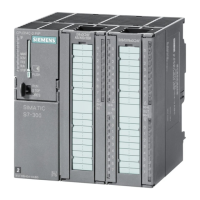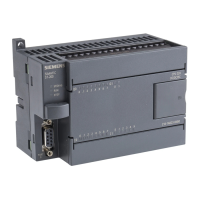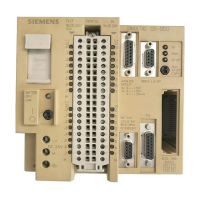Fail-Safe CPU and signal module (SM) installation
4.1 S7-1200 Fail-Safe modules installation and removal
S7-1200 Functional Safety Manual
80 Manual, 02/2015, A5E03470344-AA
Guidelines for installing S7-1200 Fail-Safe devices
The S7-1200 equipment is designed to be easy to install. You can install an S7-1200 either
on a panel or on a standard rail. The S7-1200 assembly can be oriented either horizontally
or vertically. The small size of the S7-1200 allows you to make efficient use of space.
Expansion module installation rules
● Standard and fail-safe signal modules (SM) are installed on the right side of a CPU. Fail-
safe CPUs allow a maximum of 8 signal modules, if the total of all expansion module
CPU loads does not exceed the CPU's 5 VDC and 24 VDC power supply load limits. Fail-
safe and standard modules may be intermixed on the right side of the CPU.
● Communication modules (CM), are installed on the left side of the CPU. Fail-safe CPU's
allow a maximum of 3 communication modules, if the total of all expansion module loads
does not exceed the CPU's 5 VDC and 24 VDC power load limits.
● Signal boards (SB), communications boards (CB), and battery boards (BB) are installed
on top of the CPU. A maximum of 1 signal board, communication board, or battery board
is allowed for any CPU.
The S7-1200 standard signal modules (SM), communication modules (CM), and signal
boards (SB) can be used in the same system with fail-safe SMs to complete your application
control functions that do not require a rated Safety Integrity Level (SIL). Standard SMs that
are supported for use with fail-safe SMs have the MLFB numbers (6ES7 --- ---32 0XB0).
The S7-1200 fail-safe CPUs do not support PROFIBUS or PROFINET distributed fail-safe
I/O.
Electrical equipment standards classify the SIMATIC S7-1200 system as Open Equipment.
You must install the S7-1200 in a housing, cabinet, or electric control room. You should limit
entry to the housing, cabinet, or electric control room to authorized personnel.
The installation should provide a dry environment for the S7-1200. SELV/PELV circuits are
considered to provide protection against electric shock in dry locations.
The installation should provide mechanical and environmental protection that is approved for
open equipment in your particular location category according to applicable electrical and
building codes.
Conductive contamination due to dust, moisture, and airborne pollution can cause
operational and electrical faults in the PLC.

